It was Mungo Park who first brought the shea tree and shea butter to the attention of Europeans. According to Park, this is an excellent substance – better than English butter – and one that does not go readily rancid. He collected specimens for Kew Gardens in London, the great repository of quantities of specimens collected by colonial explorers. The tree was then named after him – the scientific name, that is: Butyrospermum parkii. The popular name changes from area to area across Africa
There are a few Shea trees here in Burundi, but their ‘homeland’ is in the Sahelian area of West Africa.
The late 18th Century writings and notes of Mungo Park on his travels in West Africa are an excellent source of information on a wide number of topics – including shea butter. Nothing seemed too minor for him to describe and, where possible, to sketch. In the document that covers the two years of his first travels, we find yet another indigenous product – shea butter, made of the shea tree nuts – that tended to be ignored by early colonialists and horticulturists, who were often bent on introducing crops and processing that were known in the Northern Hemisphere.
Now, however, their value is widely recognized, and it is against the law to cut down shea trees in the Sahelian zone of Mali and elsewhere. It continues to be an important multipurpose tree, for not only do the nuts provide butter (about 50 kg of nuts per mature tree) but the branches are lopped as an important source of firewood in many areas. The leaves can provide fodder, and the tree itself provides shade and mulch for newly planted crops.
An interesting aspect of trees in certain parts of West Africa (and elsewhere in Africa), is that the trees (or a tree) can be owned by one person, and the land on which it grows by another – likewise, usufruct rights can differ. And in both cases, use rights are controlled by the owner of the tree/s, who, on their death, can will their tree/s (or land) to different people. This initially caused many problems for researchers and technical advisors from the West, who focused only on persons who controlled the land – ignoring those controlling the trees (who often are women).
That, now, is changing. However, when I was working in the West African Sahel on agroforestry and natural resource management issues in the mid-80’s and later, and was part of efforts to make these facts better known to local and international researchers, this came up constantly as a matter not properly addressed: Researchers were generally unaware of the gender difference in control – and in any case, were often unwilling to work with women. This was not an issue of Islam (as some have claimed) as much as of agronomic research at that time being largely a male domain, a fact that continues to be the case, but with inroads made.
As for making shea butter, the processing is a women’s activity and is highly labor intensive. Some organizations are helping local women’s groups to establish processing facilities that ease the procedures while keeping the product in the domain of women. How successful this will be in the long-term is unclear – but in the shorter run it may be a good strategy.
Here is the production method and assessment of shea butter by Mr. Park in 1795 or 96:
About eight o’clock we passed a large town called Kabba, situated in the midst of a beautiful and highly cultivated country, bearing a greater resemblance to the centre of England than to what I should have supposed had been the middle of Africa. [Actually, he was travelling in the Niger River watershed at the time.]
The people were everywhere employed in collecting the fruit of shea trees, from which they prepare the vegetable butter mentioned in former parts of this work.
These trees grow in great abundance all over this part of Bambarra. They are not planted by the natives, but are found growing naturally in the woods; and in clearing woodland for cultivation every tree is cut down but the shea.
The tree itself very much resembles the American oak, and the fruit–from the kernel of which, being first dried in the sun, the butter is prepared by boiling the kernel in water—has somewhat the appearance of a Spanish olive.
The kernel is enveloped in a sweet pulp, under a thin green rind; and the butter produced from it, besides the advantage of its keeping the whole year without salt, is whiter, firmer, and, to my palate, of a richer flavour, than the best butter I ever tasted made from cow’s milk.
The growth and preparation of this commodity seem to be among the first objects of African industry in this and the neighbouring states, and it constitutes a main article of their inland commerce…
Source: Mungo Park, Travels in the Interior of Africa 1795-97 – Volume 2
His advice given at the end of the quote was not heeded by colonialists. Now, of course, shea butter is a global product, but not always to the benefit of local producers. Global production and distribution chains tend either to sift out the producers and processors of traditional products or marginalize them from financial and political dynamics of these chains.
Related articles
- World’s Finest Organic Shea Butter Goes to the Dogs (prweb.com)
- Shea Butter (via Bliss No. 9) (sinnaone1.wordpress.com)
- Protecting Your Skin from the Sun: Unrefined Shea Butter (gracegratitude.wordpress.com)
- NouriShea™ Launches New Website (prweb.com)
- My Shea Butter Mix (kweenb.wordpress.com)









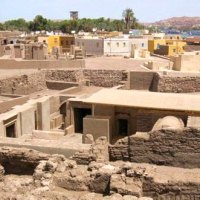
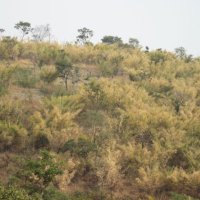
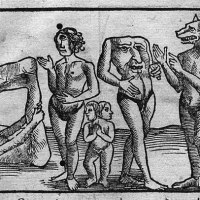
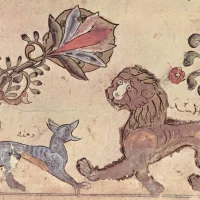


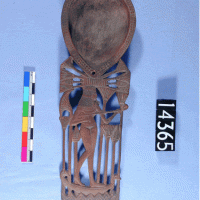














Pingback: Agriculture; Livestock; Indigenous Plants; Agroforestry – Links | DIANABUJA'S BLOG: Africa, the Middle East, Agriculture, History & Culture
Pingback: ШЕРСТЬ, ВОЛОКНА, ШЕЛК, АКСЕССУАРЫ ДЛЯ ВАЛЯНИЯ, ВСЕ ДЛЯ БИЖУТЕРИИ, ПРЯЖА ДЛЯ ВАЛЯНИЯ И ВЯЗАНИЯ, ФУРНИТУРА ДЛЯ СУМОК, Кожа и
Pingback: Multipurpose Crops in Africa & Dates in the Sahara, 1859 « Dianabuja's Blog
Pingback: More about Vegetable Butter in West and East Africa « Dianabuja's Blog
Pingback: The Way To Moisturize Your Skin Using Shea Butter Instead Of Mineral Oil | Healthy Herbal Nutrition
Pingback: Couscous and other Cuisines in the Sahel in 1798 – Mungo Park’s Experience « Dianabuja's Blog
Pingback: Great blog post on the history of Shea Butter « Mulondon's Blog
Many thanks for this fabulous, informative blog post! I have previously read a lot about Shea butter and I absolutely love it, but I learned a lot of new stuff from your article! Many thanks – great read!
LikeLike
You,re most welcome. I’ll be doing more blogs about multipurpose trees in Africa. There are many!
LikeLike
Yay! I look forward to that. I’d absolutely love it if you could write a bit about Frankincense & Myrrh at some point.
LikeLike
Yes, I can write a bit about frankincesnse and myrrh – good idea. Thanks.
LikeLike
Thanks for this background information. I had no idea that these trees were saved and others cut down around it. Fabulous stuff shea butter. I’m going to try to do some cooking with it soon.
LikeLike
Rachel – there are a variety of trees that are treated in this way, especially across the sahel. Gum arabic is the best known outside of africa, the gum coming from two species – acacia sayal and acacia nylotica. Thanks for bringing this up – the trees are very important and I’ll do a blog about ‘gum arabic’.
LikeLike